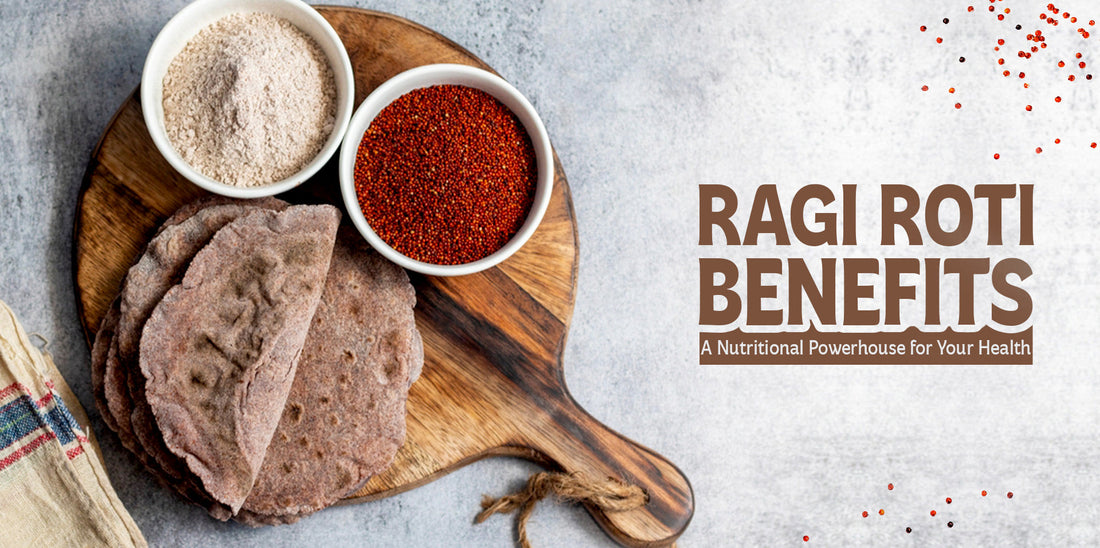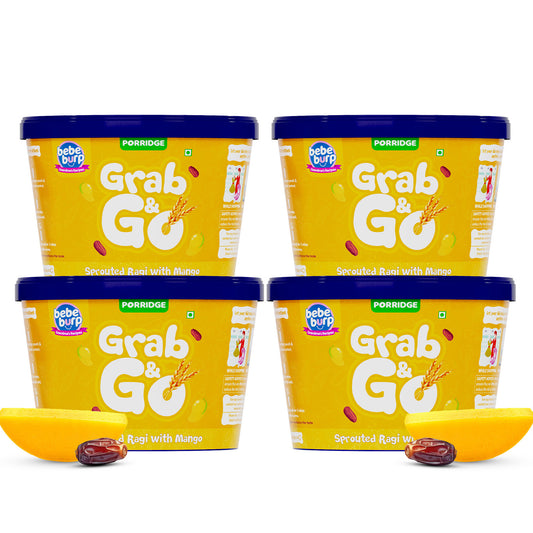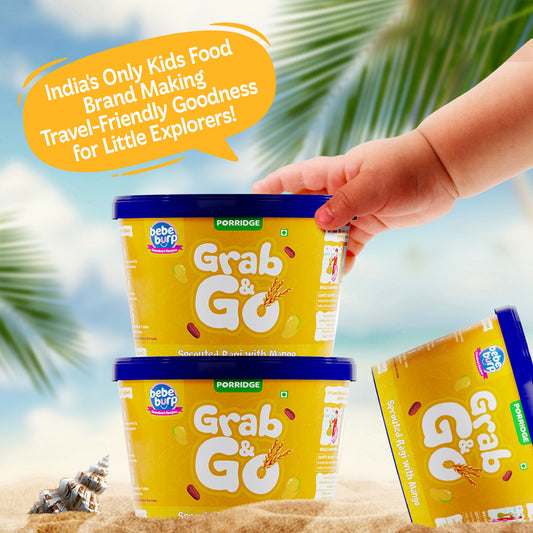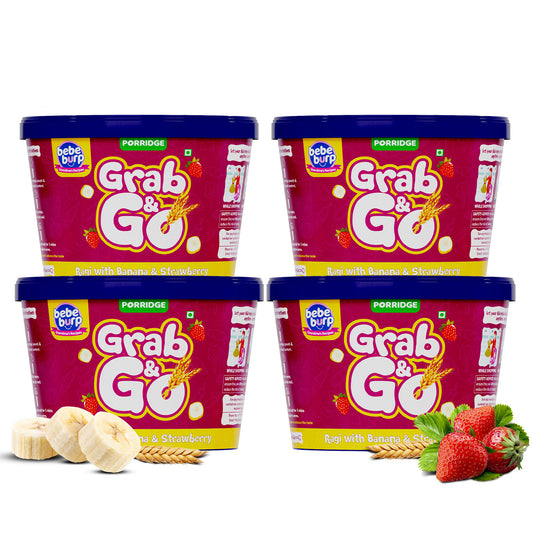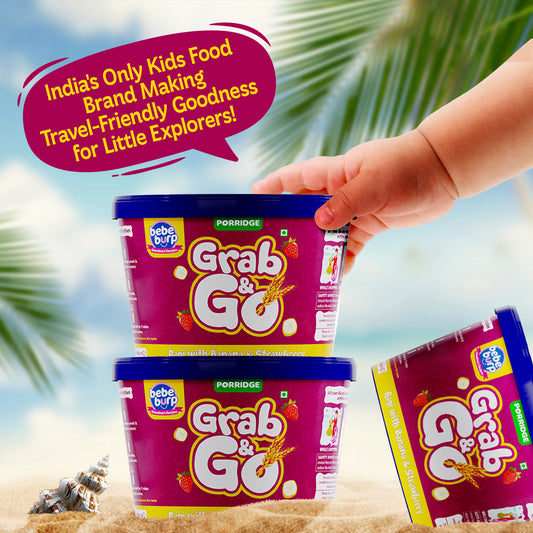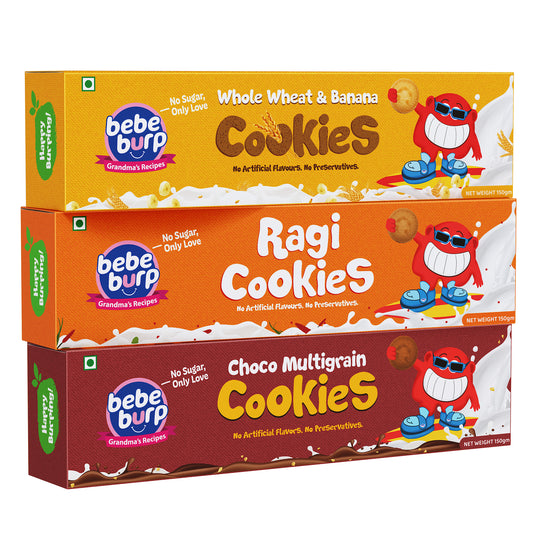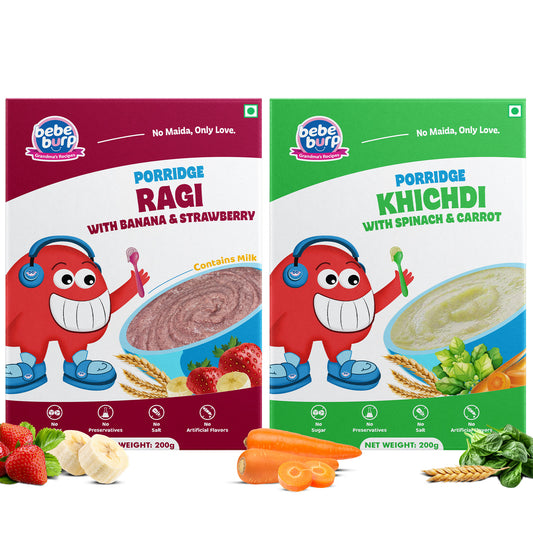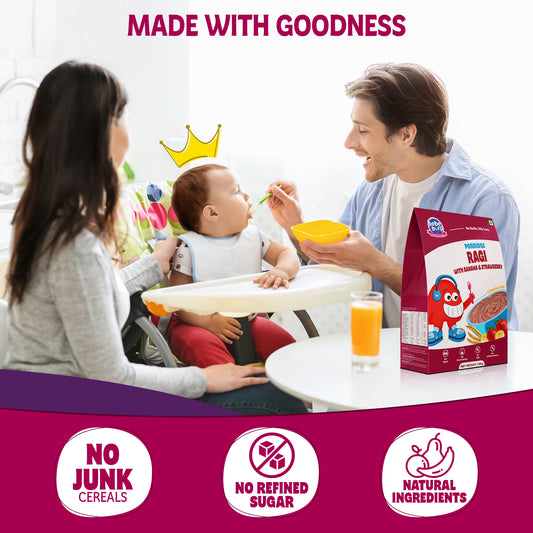What is Ragi Roti?
Have you ever wondered if there’s a superfood that can replace wheat and still be highly nutritious? Ragi roti represents the best solution for this situation.
This flatbread emerges from ragi flour otherwise known as finger millet flour which delivers numerous essential nutrients to users.
The flour provides essential nutrients including fiber together with calcium and iron ragi roti benefits both infants and adults as it functions as a superb gluten-free substitute.
The soft ragi roti functions as an ideal starting food for babies shifting to a solid diet because it processes easily in their digestive systems.
Ragi Roti Calories and Nutritional Value for Babies

The introduction of new foods to babies makes parents focus on how much nutrition they contain and how many calories are present.
Ragi roti contains minimal calories alongside numerous essential nutrients to form a nutritious addition for baby diets.
Each portion of ragi roti contains these nutritional elements according to the following breakdown (weight approx. 30g):
- Calories: ~90-100 kcal
- Protein: ~2.5g
- Fiber: ~2g
- Calcium: ~100 mg
- Iron: ~1.3 mg
- Carbohydrates: ~18g
Ragi rotis contain higher amounts of essential calcium and iron compared to wheat-based rotis which help support infant bone development and fight off anemia.
Health Benefits of Ragi Roti for Babies

1. Supports Strong Bone Development
Ragi stands out as an excellent bone-developing food for babies because it contains 344 mg of calcium per 100 grams which surpasses wheat and rice calcium levels.
2. Boosts Brain Development
Babies can develop healthy brains and improve their cognitive abilities through the iron content present in ragi.
3. Easy to Digest
Ragi being gluten-free by nature allows newborns to digest it without stomach discomfort and reduces their chances of developing bloating.
4. Keeps Baby Fuller for Longer
Compact fiber levels in ragi regulate baby satisfaction which minimizes frequent episodes of hunger.
5. Strengthens Immunity
Ragi provides antioxidants together with vitamins and minerals which support babies in building strong immunity.
Ragi Flour: The Healthy Base for Baby Foods
The nutrient-rich Ragi flour functions as finger millet flour which makes an ideal food option for newborns.
Ragi flour contains essential nutrients that help toddlers develop strong bone structure and supports their digestion and strengthens their immune system.
Ragi flour impresses both adults and children because it features natural sweetness and delicious nuttiness.
Bebe Burp prepares nutritious baby food products by using wholesome components such as ragi which offers your child outstanding health benefits during infancy.
Ragi flour presents itself as a nutritious component that babies need in porridge and cookies and puffs products.
Ragi Flour Good for Health
Yes! The nutritional value of ragi flour includes its calcium content with its iron components plus fiber content that allow for a healthful dietary regimen.
Is Ragi Flour Healthy?
Ragi flour stands as a nutritious food option that suits both infants and grown-up users.
The grain contains all necessary nutrients with low fat content and no gluten which makes it a healthy wheat flour substitute.
Benefits of Gluten-Free Ragi Flour for Sensitive Tummies
Ragi flour acts as an excellent dietary option which works perfectly for infants alongside people who suffer digestive discomforts.
This grain elevates digestion along with overall health benefits while remaining free of gluten by nature.
🌾 Gentle on Digestion – People with sensitive stomachs and little ones should benefit from ragi due to its simplicity in digestion.
💪 High in Fiber – Ragi flour controls intestinal movements successfully while stopping constipation from occurring.
🦴 Calcium-Rich – The nutrient content of ragi flour develops robust bones with strong teeth which is vital for a developing baby.
🧠 Iron-Packed – This food stimulates brain development and protects against anemia in the body.
💖 Strengthens Immunity – Antioxidants exist in this product to combat infections.
⚖️ Keeps Babies Full for Longer – Helps in healthy weight management.
How to Introduce Ragi Roti to Babies (6 Months+)

The introduction of ragi roti to young eaters should begin with small pieces of steamed roti combined with either vegetable purees or ghee. Here are some easy steps:
- Start with Ragi Porridge (6+ months): To produce a smooth porridge blend ragi flour with water or milk.
- Move to Soft Ragi Roti (8+ months): Serve your baby a soft roti along with curd or mashed dal as the side dish.
- Try Stuffed Ragi Roti (10+ months): A nutritious addition to your roti can include stuffing it with paneer or paneer along with mashed veggies.
When Should Babies Eat Ragi Roti?
- 6 Months+ – Begin with smooth ragi porridge.
- 8-10 Months – Introduce mashed ragi roti.
- 10+ Months – The first step includes using ragi roti pieces as bite-sized food.
- 1 Year+ – The complete ragi roti meal is appropriate for babies.
Where to Buy Ragi Flour for Baby-Safe Ragi Roti
Select organic ragi flour that does not contain chemicals because it brings the best nutrition and safety aspects for your child.
The ragi flour produced by Bebeburp contains only natural components without preservatives making it suitable for preparing nutritious ragi rotis.
Common Questions About Ragi Roti for Babies
1. My baby can consume ragi roti daily as a nutritious meal.
Ans: Yes! The nutritious content in ragi makes it a suitable choice as daily food for babies.
2. Which techniques can help soften ragi roti when serving it to my baby?
Ans: To make soft ragi roti:
- The dough requires supplemental warmth from milk or small portions of water during its kneading process.
- Keep the flame low while following the ghee application as a moisture barrier.
3. Ragi consumption leads to constipation in babies.
Ans: Ragi contains an abundance of fiber which supports good digestion functions. Follow up ragi-based food consumption with adequate water intake for your baby.
4. Is it possible to combine ragi flour with different types of flour?
Ans: Ragi flour becomes more utilitarian through combinations with wheat flour or millet flour.
Conclusion
The nutritious ragi roti serves as an outstanding food source that delivers numerous health advantages to babies specifically.
The nutritional content of this food gives children essential elements including calcium and iron and fiber thus it serves as an indispensable dietary component.
Ragi roti suits all purposes for introducing new foods to babies or seeking nutritious gluten-free alternatives in meals.
Properly obtain organic ragi flour from the shelves to prepare nourishing baby meals right now.

